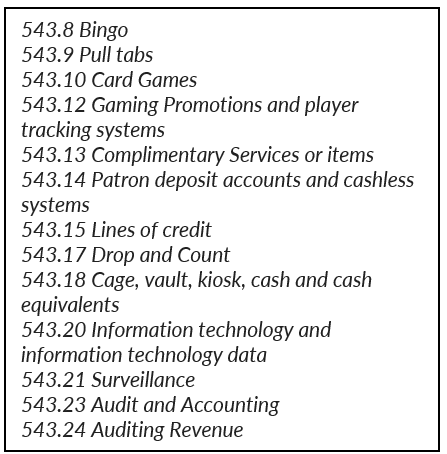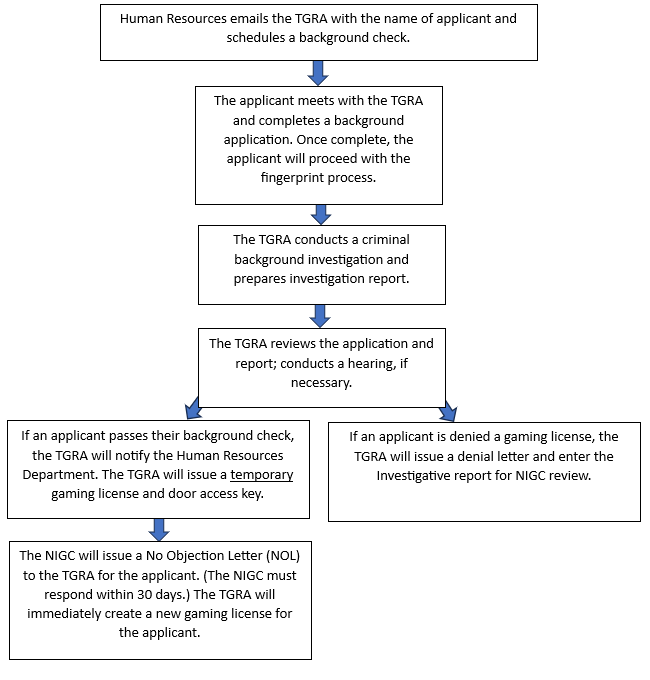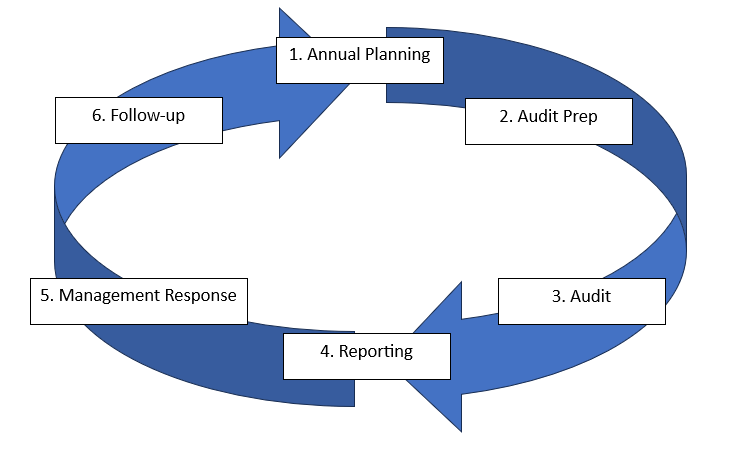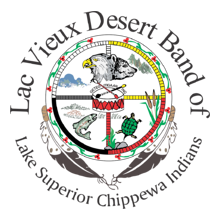TRIBAL GAMING COMMISSION
Since 2003, the LVD Tribal Government and Public Enterprise and Finance Commission (PEFC) determined that it was in the best interest of the Casino and the Tribe in general to eliminate the Gaming Commission and to replace it with three full-time Gaming Regulator positions. The Tribal Gaming Regulatory Authority (TGRA) consists of a Chairperson, Vice-Chairperson, and one (1) Commissioner. The TGRA also employs an Internal Auditor to help perform the responsibilities of the TGRA.
The TGRA is an independent body of the Gaming Operation and the Tribal Council. This independence is essential to ensure a well-regulated Gaming Operation. Our purpose is purely regulatory, not managerial. The TGRA strives to ensure that all gaming on the Tribe’s Indian Lands is regulated in a manner that adequately protects the environment, the public health, welfare, morals of all persons residing on the Indian Lands, all invitees to the gaming establishment and the Tribe from any adverse effects that may derive from unregulated gaming. The TGRA also performs background investigations on all employees of the gaming operation. It is our responsibility to ensure that all gaming applications are reviewed and scrutinized to ensure that an applicant’s prior activity, criminal record, reputation, habits, and association do not pose a threat to the public interest or the Tribe.
OUR MISSION
To ensure that Tribal property and assets are properly segregated and safeguarded at all times. We carry out the expectations of the Tribe and responsibilities of the TGRA by ensuring that gaming conducted on the Tribes Indian Lands are compliant with Federal Law, Tribal Law, and any applicable State Laws. The foundation of the TGRA is Integrity, Fairness, and Impartialness.
TRIBAL GAMING HISTORY
CALIFORNIA v. CABAZON BAND OF MISSION INDIANS 480 U.S. 202 (1987)
In 1987, the United States Supreme Court’s landmark decision in favor of the Cabazon Band of Mission Indians recognized the Tribal government’s sovereign right to regulate gaming on their reservations. The United States Congress passed the Indian Gaming Regulatory Act (IGRA) the following year in response to the Supreme Court’s decision.
TRIBAL GAMING REGULATORY ACT (IGRA)
IGRA was enacted by the United States Congress on October 17, 1988, to regulate the conduct of gaming on Indian Lands. IGRA classifies the various forms of gaming into different classes and establishes regulatory jurisdiction for each class. IGRA establishes the National Indian Gaming Commission (NIGC) and the regulatory structure for Indian gaming in the United States. Public Law 100-497-Oct. 17, 1988 100th Congress Sec. 2701.
The purpose of IGRA is –
(1) to provide a statutory basis for the operation of gaming by Indian tribes as a means of promoting tribal economic development, self-sufficiency, and strong tribal governments.
(2) to provide a statutory basis for the regulation of gaming by an Indian tribe adequate to shield it from organized crime and other corrupting influences, to ensure that the Indian tribe is the primary
beneficiary of the gaming operation, and to assure that gaming is conducted fairly and honestly by both the operator and players; and
(3) to declare that the establishment of independent Federal regulatory authority for gaming on Indian lands, the establishment of Federal standards for gaming on Indian lands, and the establishment of a National Indian Gaming Commission (NIGC) are necessary to meet congressional concerns regarding gaming and to protect such gaming as a means of generating tribal revenue.
GAMING ORDINANCE
The IGRA requires that each tribe enact a tribal gaming ordinance that is approved by the NIGC Chairman before opening a gaming operation. The IGRA 25 U.S.C. 2710, and NIGC regulations, 25 C.F.R. part 522, require certain provisions to appear in the ordinance.
LVD’s Gaming Ordinance was approved on April 5, 1994, by Tribal Council Resolution No. 94-015. The NIGC approved the LVD Gaming Ordinance under the Indian Gaming Regulatory Act (IGRA).
1) Operation of Class I gaming shall be carried out solely by the Tribe, according to rules and regulations adopted by the Tribal Gaming Commission.
2) Class II and Class III gaming shall be regulated by the Tribal Gaming Commission in accordance with the IGRA and the Tribal/State Gaming Compact.
3) All proceeds of the gaming activities authorized by this ordinance and received by the Tribe shall be used to promote the health, education, and welfare of the Tribe. All proceeds shall be turned over to the accounting office on the next workday after said proceeds are obtained by the operator.
TRIBAL - STATE COMPACT
Native American tribes are sovereign nations. As such, the State of Michigan does not have general regulatory authority over tribal casinos. Instead, they are regulated by the NIGC and the government of the appropriate tribal community. The State of Michigan does have oversight authority over compliance with the Tribal-State Class III Gaming Compacts. The compacts are written agreements between the tribal communities and the State and signed by the Governor. The Governor assigned the Michigan Gaming Control Board (MGCB) staff responsibility for auditing compliance with compact provisions. The five-member Board has no involvement with tribal casinos.
MINIMUM INTERNAL CONTROL STANDARDS (MICS)
With the approval of the IGRA was the creation of the NIGC, and the Gaming Commission; the NIGC created Minimum Internal Control Standards (MICS) that tribal governments must comply with. MICS are the minimum standards and a TGRA may establish and implement additional controls that do not conflict with those set out in 25 C.F.R. § 543 Minimum Internal Control Standards for Class II Gaming.

TRIBAL INTERNAL CONTROL STANDARDS (TICS)
The TGRA utilizes the NIGC MICS regulations as a framework to create regulations to be known as TICS. These regulations contain standards and procedures that govern cash handling, documentation, game integrity, auditing, surveillance, information technology, complimentary services or items, gaming promotions and player tracking systems, drop and count, as well as other areas as approved by the TGRA. TGRAS must ensure that TICS are established and implemented that provide a level of control that equals or exceeds the applicable standards set forth in this part.
SYSTEM OF INTERANAL CONTROL STANDARDS (SICS)
SICS. Each gaming operation must develop SICS, as approved by the TGRA, to implement the TICS. The SICS is an overall operational framework for the Northern Waters Casino Resort (NWCR) that incorporates principles of independence and segregation of function, and is comprised of written policies, procedures, and standard practices based on overarching regulatory standards specifically designed to create a system of checks and balances to safeguard the integrity of NWCR and protect its assets from unauthorized access, misappropriation, forgery, theft, or fraud.
BACKGROUND INVESTIGATIONS
Q: WHY DOES THE GAMING COMMISSION TAKE A LONG TIME ISSUING A GAMING LICENSE?
The National Indian Gaming Commission (NIGC) processes fingerprints submitted by tribes for background and investigations of primary management officials (PMO) and key employees (KE). Prior to issuing a gaming license to a PMO or KE, a tribe is required to perform a fingerprint check through the FBI records system as part of the background investigation on each applicant. The criminal history record information (CHRI) obtained as a result of the check assists the tribe in determining the applicant’s eligibility for employment.
CHRI
CHRI means information collected by criminal justice agencies about individuals, consisting of identifiably descriptions and notations of arrests, detentions, indictments, or other formal criminal charges, and any disposition arising therefrom, including acquittal, sentencing, correctional supervision, and release. CHRI is highly sensitive information – tribes, therefore, must take steps to ensure that it is used only for authorized purposes and securely maintained. CHRI may only be used to determine a PMO/KE applicant’s eligibility for employment in the tribe’s gaming operation, not for any other purpose. To be clear, “official use” of CHRI for licensing purposes is limited to those individuals performing work functions for, or managing, the gaming operation who come within the NIGC regulatory definitions of PMO/KE, as set forth in 25 C.F.R. §§ 502.14 (a) – (c) and 502.19 (a) – (c). All CHRI access must be restricted to tribal personnel directly involved in the licensing deliberations. And tribes shall maintain records of all persons accessing CHRI, which will be furnished to NIGC upon request. CHRI cannot be improperly disseminated beyond tribal personnel directly involved in licensing deliberations or reused.
FBI'S CJIS SECURITY POLICY AND COMPLIANCE AUDITS
The FBI’s Criminal Justice Information Services (CJIS) Division issued the CJIS Security policy to protect Criminal Justice Information (CJI) and, its subset, CHRI. The policy applies to every individual and entity accessing CJI and CHRI, detailing operational and information security requirements for protecting transmissions and storage of it – including the hardware, software, and infrastructure used to receive, transmit, and store it. The policy also contains directives on how CJI and CHRI shall be maintained, viewed, accessed, processed, released, and destroyed and the training and authorizations needed for those individuals that do so. All tribes accessing CHRI through NIGC must agree to comply with the policy and implement its requirements as detailed in their NIGC MOUs and the policy itself. Tribes will be subject to annual audits, including information technology security audits, by the NIGC to ensure compliance with the NIGC MOU and the FBI’s CJIS Security policy. The FBI may also audit the Tribes, and such audits would likely occur once every three years.
BACKGROUND INVESTIGATIONS - SEE TIMELINE BELOW
With the approval of the LVD Gaming Ordinance, the Tribe is now required to conduct background investigations on its key employees (KE) and primary management officials (PMO). The NIGC expects to receive a completed application for each KE/PMO pursuant to 25 C.F.R. § 556.5(a) and an investigative report on each background investigation before issuing a license to a KE/PMO pursuant to 25 C.F.R. § 556. (b).

INTERNAL AUDIT
Internal auditing is an independent, objective assurance and consulting activity designed to add value and improve an organization’s operations. It helps an organization accomplish its objectives by bringing a systematic, disciplined approach to evaluate and improve the effectiveness of risk management, control, and governance processes.

OBJECTIVES
25 CFR Part 542 (MICS) requires the gaming operation’s internal auditor to perform observations, document examinations and inquiries of employees to determine compliance with applicable MICS. The NIGC publishes recommended checklists, programs and guidelines for use in satisfying this regulatory requirement. The primary objective of these checklists, programs and guidelines is to provide guidance on what is necessary to comply with 25 CFR Part 542 (MICS). A secondary objective is to provide some consistency among internal audit departments and other individuals performing internal audit work by providing recommendations on standardizing the document examination sample sizes and the scope of the work to be performed. Standardization requirements ensure that all internal audit departments are performing a minimum amount of work and are performing the same required procedures. Finally, by standardizing the questionnaires, the NIGC is able to review any internal auditor’s workpapers in a more efficient and time saving manner without having to adjust to the myriad of internal audit department and accounting firm styles. Each checklist provided by the NIGC contains meaning of terms used including sample size and a testing program. Although the checklists are not to be considered all-encompassing, they address the MICS that became effective on June 27, 2002 and revised on May 4, 2005, August 12, 2005, and May 11, 2006. As the information changes due to the adoption of new regulations, internal auditors are expected to develop their own testing procedures until updated versions of the checklists are distributed. Additionally, these Guidelines are not intended to limit the internal auditor to the performance of only the above-specified procedures. If additional procedures are performed (e.g., expanded document testing), the results obtained should be included in the internal auditor’s report pursuant to 25 CFR Part 542 (MICS). The internal auditor may also develop compliance checklists appropriate for a Tier A, Tier B, or Tier C gaming operation that at a minimum address the MICS. In connection with the issuance of the NIGC MICS Sections 542.22; 542.32; and 542.42 the Internal Auditor is offered the following information as recommended guidance:
REQUIRMENT FOR INTERNAL AUDIT FUNCTION
Internal Audit Minimum Internal Control Standard (a)(1) requires that a separate internal audit department be maintained whose primary function is performing internal audit work and that is independent with respect to the departments subject to audit. Pursuant to (a)(1), for gaming operations who meet the requirements of a Tier A or Tier B gaming operation who are not required to maintain a separate internal audit department, personnel who are independent with respect to the departments/procedures being examined perform internal audit work. Additionally, all Tier A, B, and C gaming operations, as defined in Section 542.2, must provide for an internal audit function. The following are definitions of the different Tier classifications:
- Tier A means gaming operations with annual gross gaming revenues of more than $1 million but not more than $5 million.
- Tier B means gaming operations with annual gross gaming revenues of more than $5 million but not more than $15 million.
- Tier C means gaming operations with annual gross gaming revenues of more than $15 million.
RESPONSIBILITIES
- Review internal controls: Compare the gaming operation’s internal controls to the Minimum Internal Control Standards (MICS).
- Test compliance: Perform compliance testing to ensure the gaming operation is following the MICS.
- Review records: Examine casino and accounting records and documentation
- Interview personnel: Interview casino personnel to ensure they are following policies and procedures.
- Identify deficiencies: Identify any deficiencies in the internal controls and report them. Recommend remediation: Recommend ways to fix any deficiencies and improve internal controls.
INDEPENDENCE
- Internal auditors should be independent from the gaming facility’s management.
- They should report directly to the tribal gaming regulatory authority.
- They should not be part of the gaming facility’s accounting department or management.
AUDIT REQUIRMENTS
- Internal auditors should document all of their work, including instances of noncompliance.
- They should investigate and resolve any material exceptions.
- They should submit audit reports and management letters to the National Indian Gaming Commission.
